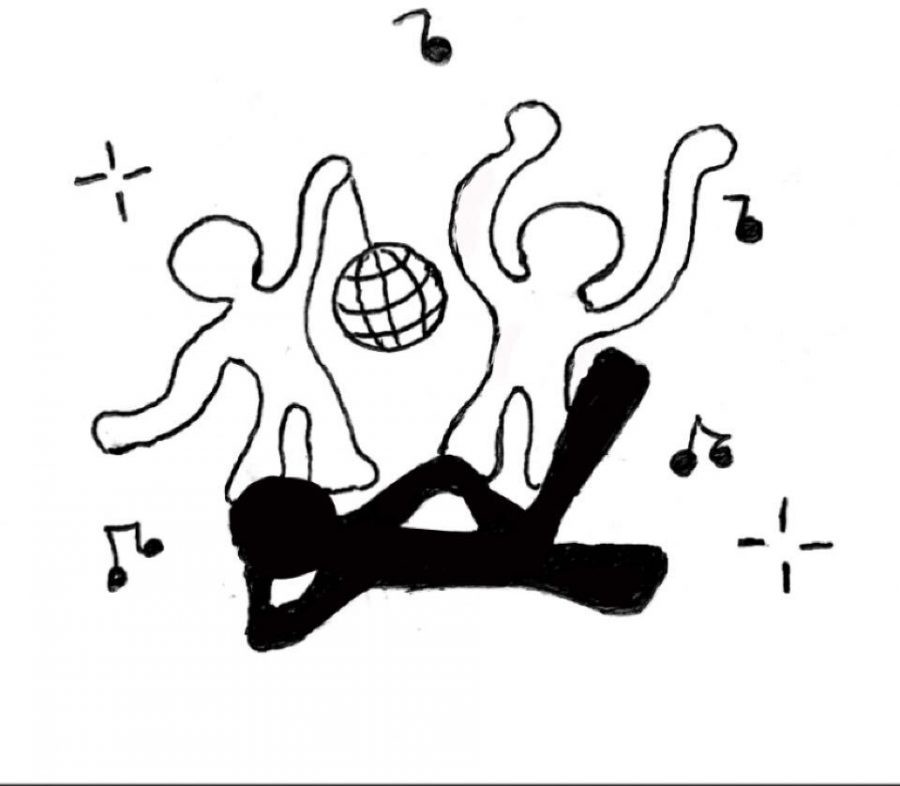Opinion | The benefits of dancing (badly)
March 5, 2021
Many of us have encountered moments where it seems everyone around us can move to the rhythm, groove to the beat and get down without a problem — yet our own limbs can’t seem to shimmy properly.
People avoid dancing because they feel intimidated, awkward or just outright incapable, but even if you’re an objectively bad dancer, you’re not exempted from the benefits. Even though, in the time of COVID-19, students should avoid parties — the typical environment for dancing — there’s no reason they should avoid dancing altogether.
In reality, there are very few people who can dance exceptionally, and most of the talent is in their confidence and passion. Dancing isn’t necessarily a skill — dancing is a form of expression with immense health benefits. Just because you may think you can’t dance doesn’t mean you shouldn’t, and here’s why:
Physical exercise and coordination
Physical exercise is an obvious health benefit to dancing, but it’s more than just a cardio workout. While dancing improves muscle tone, strength, endurance and respiratory function, there are many more less obvious physical perks. Dancing contributes to increased coordination and agility as well as balance and spatial awareness. The sporadic movements aid in physical perception and autonomy and allow one to feel more connected to their own body.
Cognitive function and brain health
Dancing improves cognitive function and creative thinking by essentially challenging your brain to focus on multiple tasks at once. It may just seem like flailing limbs, but a more scientific understanding of dancing is that it’s actually a flow of continuous movements composed of a series of patterns influenced by external information — external information being space, music, culture and any other factors contributing to the vibe. Dancing is linked to increased memory function, improved neuroplasticity, decreased depression and reduced risk of dementia, as well as countless other cognitive-related diseases. Exercising the body by dancing also exercises the mind.
Emotional mood and confidence
Obviously dancing boosts mood and emotional state, but not just because it’s fun. Dancing is an inclusive activity, and its interpretation and expression is up to what feels good to the individual — so if you’re able to move, even only part of your body, you can dance. By letting loose and “feeling” the music, you can greatly reduce symptoms of anxiety and depression because dancing releases more endorphins than any other type of exercise. Likewise, the courage to dance at all, whether alone or around others, improves self-esteem and confidence, and therefore overall mood.
Releasing trauma
Dancing can help to release some trauma that’s been stored in the body. Newer studies show how we don’t just hold onto trauma in our brains, but in our bodies as well. Evidence of cellular memory shows that our body’s cells could hold an imprint of past traumatic events. The emotional and physical reactions they trigger can increase vulnerability to more serious health conditions such as heart attacks, strokes, obesity and cancer. The hips hold the most trauma, negative emotion and tension — in the same way we clench our jaws when we’re angry, our hips react by clenching when we feel scared, threatened or sad. Physical activity is one recommendation to combat trauma and PTSD, therefore dancing, and literally “shaking that ass,” is ideal in releasing trauma and negativity.
Fun and relieving
And of course, dancing is simply fun! It’s an easy way to be entertained without the need for anything but yourself and some music. Dancing and sharing the upbeat energy with others creates connections that encourage feelings of acceptance and bonding. The emotional release while dancing can be emancipating, especially alone when there’s no worry of judgement or embarrassment, just unapologetic freedom of expression. Dancing is fun because it’s universal, versatile and enjoyable at any time.
Dancing is instinctual — it’s why ancestors painted images of dancing on cave walls and why babies bop around to beats without really understanding what they’re doing — dancing is essentially human nature.
Dance moves don’t have to be amazing for them to be enjoyed — as long as you’re having fun and feeling good, who’s to say whether or not your dancing is bad? If you think you’re a bad dancer, odds are you just simply haven’t danced enough. So dance alone, dance with a friend, dance with a partner, dance in private, dance in public, dance however, wherever and whenever you want because “any kind of dancing is better than no dancing at all.”
Follow Nina on Instagram and Twitter @ninaboebeana or email her at [email protected].



